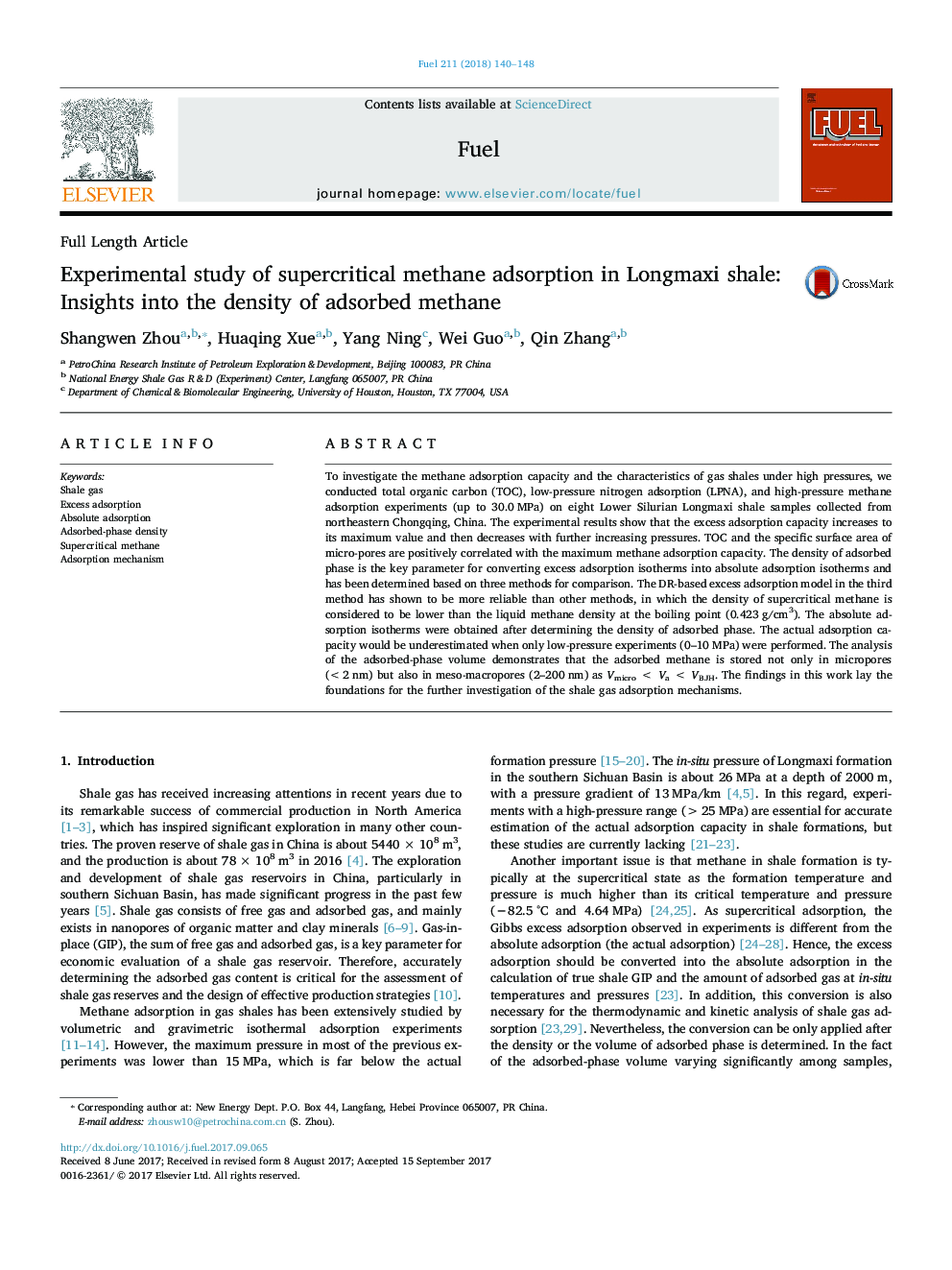| Article ID | Journal | Published Year | Pages | File Type |
|---|---|---|---|---|
| 6473413 | Fuel | 2018 | 9 Pages |
â¢Excess adsorption capacity increases to its maximum value and then decreases with further increasing pressures.â¢The DR-based excess adsorption model is more reliable to determine the density of adsorbed methane.â¢The actual adsorption capacity will be underestimated if we only conducted the low-pressure experiments.â¢Adsorbed methane is not only filled in the micropores and also monolayer-adsorbed in the meso-macropores.
To investigate the methane adsorption capacity and the characteristics of gas shales under high pressures, we conducted total organic carbon (TOC), low-pressure nitrogen adsorption (LPNA), and high-pressure methane adsorption experiments (up to 30.0 MPa) on eight Lower Silurian Longmaxi shale samples collected from northeastern Chongqing, China. The experimental results show that the excess adsorption capacity increases to its maximum value and then decreases with further increasing pressures. TOC and the specific surface area of micro-pores are positively correlated with the maximum methane adsorption capacity. The density of adsorbed phase is the key parameter for converting excess adsorption isotherms into absolute adsorption isotherms and has been determined based on three methods for comparison. The DR-based excess adsorption model in the third method has shown to be more reliable than other methods, in which the density of supercritical methane is considered to be lower than the liquid methane density at the boiling point (0.423 g/cm3). The absolute adsorption isotherms were obtained after determining the density of adsorbed phase. The actual adsorption capacity would be underestimated when only low-pressure experiments (0-10 MPa) were performed. The analysis of the adsorbed-phase volume demonstrates that the adsorbed methane is stored not only in micropores (<2 nm) but also in meso-macropores (2-200 nm) as Vmicro < Va < VBJH. The findings in this work lay the foundations for the further investigation of the shale gas adsorption mechanisms.
